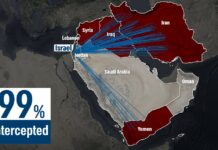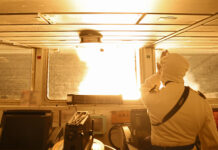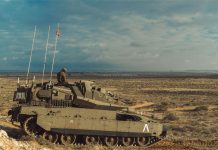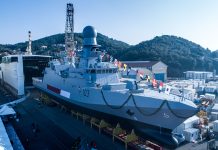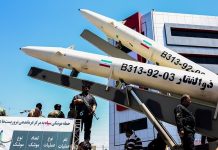Clearly Iran is a disruptive element in terms of the strategic environment in the Middle East, it seeks to change the strategic situation to meet its own needs. However, Iranian interests run counter to those of the majority of Arab states and other regional actors. Increasingly, these ambitions are not just limited to the Middle East; Iran and its proxies are developing a global strategic footprint, increasing the ability of Tehran to project power and to disrupt the strategic environment in other parts of the world.
From the perspective of the Gulf States, the growing military power and political influence of Iran is profoundly destabilising and represents a clear threat to their security. To them it is obvious that Iran seeks to be the dominant regional power, it is also obvious that Iran is moving towards a nuclear weapons capability that will inevitably cement that position of dominance. This threat perception is based upon more than observation of Iran’s current military and political strategy, it is also based on historical and religious/ideological conflicts.
The Gulf States, though wealthy, in the majority of cases do not have the military, industrial, or population resources to confront Iran, hence their reliance on external actors, principally the US, to provide a deterrent against any Iranian adventurism. The problem is that doubts are growing over the will of the US to continue to provide an effective deterrent. The current US administration has a seemingly forgiving attitude towards Iran, and a broadly similar position is held by European states. As Iran has expanded its control and influence through Iraq, into Syria and beyond into Lebanon, the lack of response or countermeasures has incentivised the Gulf States to seek other solutions.
The opening of diplomatic relations with Israel by some of the Gulf States, offers some interesting security possibilities. It also opens the way to purchasing Israeli defence equipment and potentially working collaboratively with the Israeli defence industry. Other more traditional approaches to enhancing Gulf security have seen invitations to non-US foreign powers to establish local bases, such as Britain, France and Turkey. Saudi Arabia has military forces from Pakistan based in-country, while Kuwait has a contingent from Bangladesh. While the United Arab Emirates (UAE) has used foreign military contractors in service and support roles, as well as forming combatant units staffed by foreign troops.
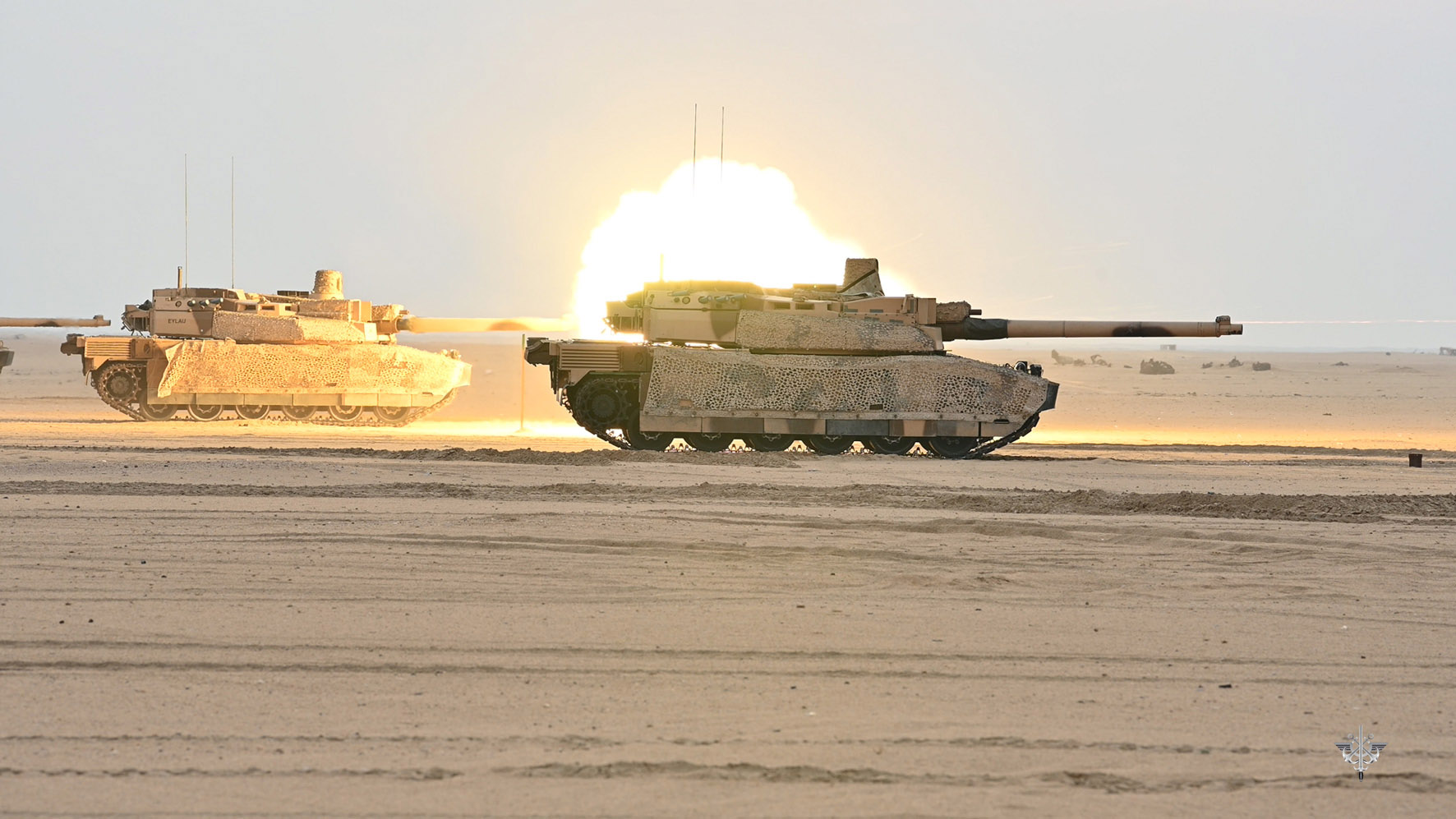
Credit: French Army
A Different Kind of Threat
There is no doubt that Iran presents a significant threat to the security architecture in the Gulf and beyond into the greater Middle East. However, the situation is more nuanced than it might seem at first glance. Iran is a strategic threat for Gulf states, but it is not an unstoppable force, and it has security problems of its own to deal with.
To develop an understanding of what Iran is trying to achieve, it is necessary to understand the myriad factors that motivate the Iranian leadership, inform their strategic world view, and shape their security policy. These include theocracy, the ideology of the regime, traditional security interests and threat perceptions. Fundamentally though, the primary interest of the Iranian leadership and its strategic planners is the survival of the theocratic regime, the leadership of the regime and the elites that benefit from the regime against a multitude of real and perceived threats, both internal and external.
It is very easy to portray Iran as a singularly focused malevolent strategic actor determined to bring about chaos wherever and whenever it can. In reality, as a part of its strategic toolbox, the regime in Tehran is content to export chaos when it suits its interests, but this is not about generating chaos for the sake of chaos. Rather, it is about disrupting the strategic architecture of a particular state or region, for the sake of reshaping it to better suit Iranian interests and objectives. What is significant is that these interests and objectives are becoming more globalised and, in consequence, Iran’s pursuit of these interests and objectives is far more disruptive to an international system that Tehran sees as inimical to its interests.

Credit: US Navy
Core Threat Perceptions
As previously stated, the fundamental interest of the Tehran regime is to ensure its own survival against internal and external threats. Although many look at Iran as a unitary state, that is not the case – non-Iranian ethnic minorities such as Arabs, Azerbaijanis, Baluchs, Kurds, Turkmen and others now make up some 50% of the Iranian population. Located away from the Iranian heartland around Tehran, these ethnic minorities face poverty and discrimination, their children cannot be educated in their native languages and their cultures are diminished as unworthy. It is estimated that some 40% of the Iranian population is not able to converse properly in Farsi. Many of these minority ethnic groups are situated in border regions, sharing linguistic and cultural ties with ethnic groups over the other side of the borders.
In the face of such discrimination and outright oppression it is hardly surprising that the ethnic minorities continue to be a growing source of opposition to the Iranian regime. It should be remembered that the latest series of anti-regime demonstrations started with the murder of Mahsa Amini, a Kurdish woman, on 16 September 2022. She was arrested for improperly wearing a hijab by the ‘Morality Police’ and then beaten to death. Anti-regime protests spurred by the death of Mahsa Amini quickly spread across the country. The cost of protesting against the regime in Iran is high, with human rights groups claiming that by December 2022, 476 protestors had been killed by Iranian security forces.
Opposition to the regime is not centred on ethnic minorities, with ethnic Persians quite prepared to take to the streets in the face of state repression. This is hardly surprising, as in recent years economic conditions are hard for ordinary people, with consumer price inflation running at 39.91% in 2019, 30.59% in 2020, 43.39% in 2021 and 52.2% by August 2022. Inefficiencies in the state-dominated Iranian economy and rampant corruption further weaken the regime’s hold on large sectors of the population. What holds the state together though is the security forces, such as the Islamic Revolutionary Guard Corps (IRGC), the Basij paramilitary forces and similar pro-regime groupings. All of these have a stake in the survival of the regime and will do whatever it takes to ensure the continuation of the status quo.
Long-standing anti-regime forces do exist in Iran, most notably the Mojahedin-e-Khalq (MEK; ENG: People’s Mojahedin Organization of Iran). MEK started out in 1965 as an opposition group to the Shah, by 1979 MEK played a key armed role in the Iranian Revolution that led to the end of the Shah. After the revolution the clerical regime of the Ayatollah Khomeini, saw the MEK as an obstacle and was suspicious of its ideology, said to be a unique blend of Shia Islam and Marxism. As a result, MEK was brutally suppressed by the Iranian regime, and many MEK members fled Iran, while others went undercover to resist the regime.
The MEK still continues to fight the Iranian regime to this day and forms the central element of the National Council of Resistance of Iran (NCRI), the umbrella organisation of anti-Iranian government groups. They represent a threat to the regime, hence the constant level of anti-MEK measures by the regime, but they are not strong enough to effect change in Iran. Should the repressive capabilities of the Iranian government weaken, that might change the game and lead to the MEK becoming more active in Iran.

Credit: Office of the Supreme Leader
Drugs and Decline
There is another challenge to the regime and that is illegal narcotics. Drug abuse was not uncommon in pre-revolutionary Iran, but after the revolution, the Khomeini government took extreme action against both drug dealers and users. This might have controlled the drug problem in the short-term, but around that time came the collapse of Afghanistan after the Soviet invasion, the resistance movement against the Soviets, civil war and the Taliban. If there was one way to make money in Afghanistan it was the cultivation and sale of opium. As Iran bordered Afghanistan it became a transhipment point for opium, as well as a major market for opium as domestic consumption grew year-on-year. A recent study noted that: “Iran has the highest rate of non-medical opium use in the world.” Iran’s problem also extends beyond opiates, with crystal methamphetamine becoming a major problem as well. Drug abuse is one of the top four causes of negative health outcomes in Iran.
Another negative factor that the regime has to contend with is emigration by the urban middle classes, people who are highly educated and who would normally fill high-level positions in a country like Iran. According to a paper on Iranian emigration: “since 1979, some 8 million people, almost 10% of the population, have left Iran, including an estimated 4.2 million with higher education and skills.” Apparently the scale of skilled emigration is increasing, over the last four years on average 4,000 qualified medical doctors have left each year. IRNA, the official Iranian news agency, has stated that some 30,000 Iranian doctors and senior nurses are waiting for ‘good standing certificates’ that will confirm their medical credentials and allow them to practice abroad.
Emigration of this nature removes people from Iran who could turn into regime opponents and provide leadership for anti-regime movements, as such this could be seen as a positive for the Iranian government. There is more to it than that though, a lot of these people who are leaving come from families that are the Iranian elite, hardly a ringing endorsement of the regime, especially when you consider that these were the people best -placed to benefit from the regime.
The Regime Survives and Advances
The Iranian regime has faced severe internal challenges for a considerable period of time, yet the regime has survived, and its coercive powers do not appear to have weakened in any major way. What is somewhat surprising is that in spite of its execution of regime opponents at home and abroad, its sponsoring of proxies to conduct terrorist attacks in Asia, South America and even Europe, and its strides towards a nuclear weapons capability, large sectors of the international community are willing to overlook these in favour of a more pragmatic stance on Tehran.
The EU stresses the fact that respect for human rights is central to their foreign relations policy, yet according to a recent report by the Iranian semi-official Mehr News Agency, quoting figures released by Eurostat: “Iran and the European Union’s 27 member states traded EUR 4.36 Bn worth of goods during the first 10 months of 2022, registering a 14.28% rise compared with last year’s corresponding period.” Germany remains the main Iranian EU trading partner, trade between the two countries amounted to EUR 1.6 Bn, up 15.44% on the year before. In second place was Italy with EUR 555.39 M worth of Iranian trade, up 11.14% on the year before.
While the Iranian regime faces significant domestic threats to its hold on power, what is surprising is that there has been very little effort to leverage these internal challenges to the regime by foreign powers who wish to limit Iranian adventurism. Inevitably, the regime labels any act of domestic opposition as being directed by the CIA, SIS, or Mossad, yet the truth is that the US has been strangely reluctant to offer support to these opposition forces, with Europe following the US’ lead. The reasoning behind this inaction is the continuing belief that some ‘grand bargain’ can be reached with Iran that will see Tehran tone down its adventurism and happily join the international community, who in turn will be poised to benefit from Iran’s oil and the domestic Iranian market for goods and services. However, thus far this ‘grand bargain’ has remained out of reach.
Despite the domestic threats, the regime ought to be satisfied with the way events are turning to their advantage internationally. China remains Iran’s largest trading partner and that seems set to continue, helping to strengthen Iran’s economic situation. Arguably the most interesting recent development is the evolution of the Iranian relationship with Russia since the latter’s invasion of Ukraine.
Iran has a long-standing defence relationship with Russia, but that relationship is growing ever closer. Ironically, Iran had been prepared to supply artillery ammunition to the Ukraine earlier in the conflict, but more recently Iran has been supplying Russia with a range of UAVs and loitering munitions, plus training and support. In return, Iran will be receiving Sukhoi Su-35 fighter aircraft, plus an accompanying support package – a major boost to their air power. Other defence technologies are also being transferred to Iran, and additional economic and financial links are being forged between Tehran and Moscow.
This situation is a win-win for Iran, advanced defence equipment and technology will increase Iranian combat capabilities and allow them to enhance their defence industrial base. A closer economic relationship with Russia, added to the already close relationship with China, will strengthen the ability of the Iranian economy to resist US and European economic sanctions. All of this represents an important set of developments for Iran.
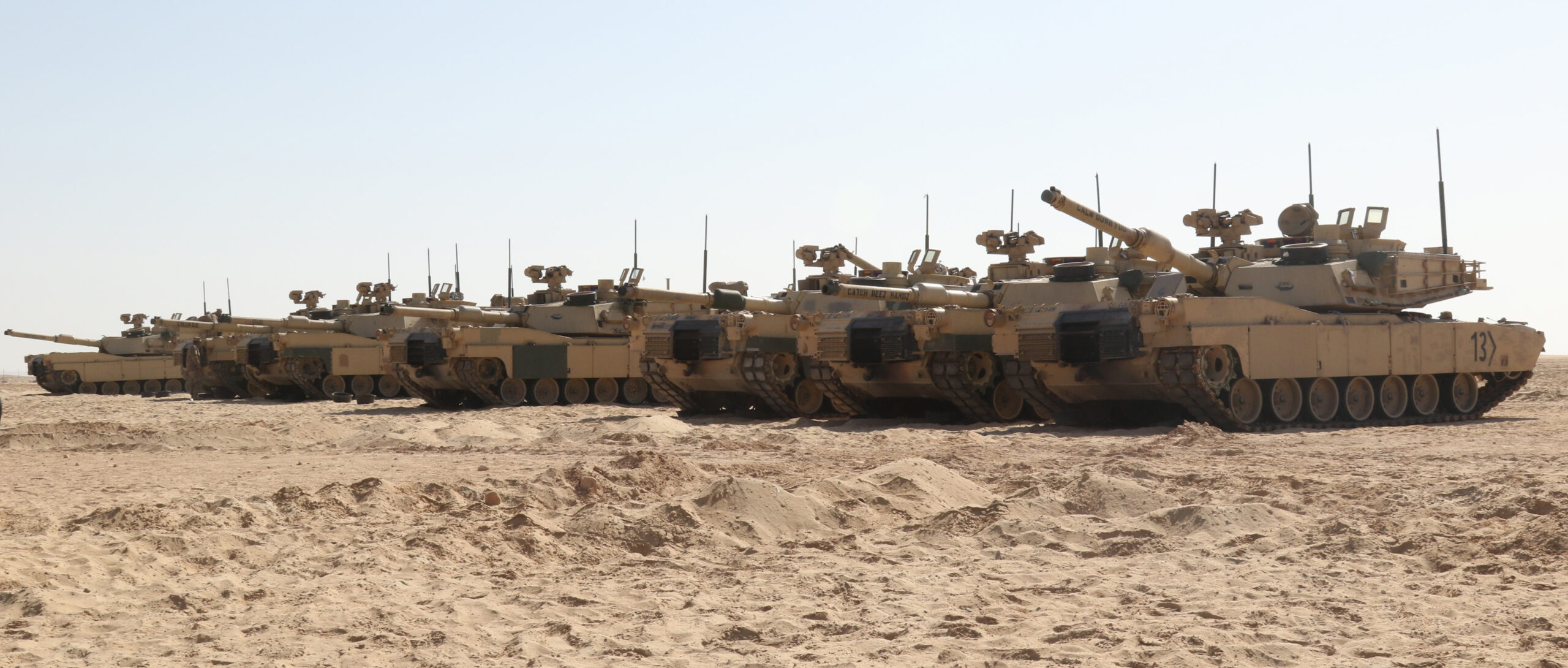
Credit: US Army
What comes next though? There has been considerable speculation that Iran could supply Russia with Fateh-110 (300 km range/500 kg unitary of submunition warhead) and Zolfaghar (700 km range/579 kg warhead) theatre ballistic missiles (TBMs). Thus far Iran has dismissed this possibility as mere speculation, but the recent attacks on Iranian defence and defence production facilities by ‘unidentified’ UAVs indicate that Iran will have to make a difficult risk assessment before it agrees to supply Russia with missiles. Should it decide to proceed, Iran might find itself suddenly dealing with a host of active measures from foreign agencies aimed at regime targets and boosting domestic opposition. Whatever happens next, Iran will remain a disruptive element in the Gulf security architecture.
David Saw



